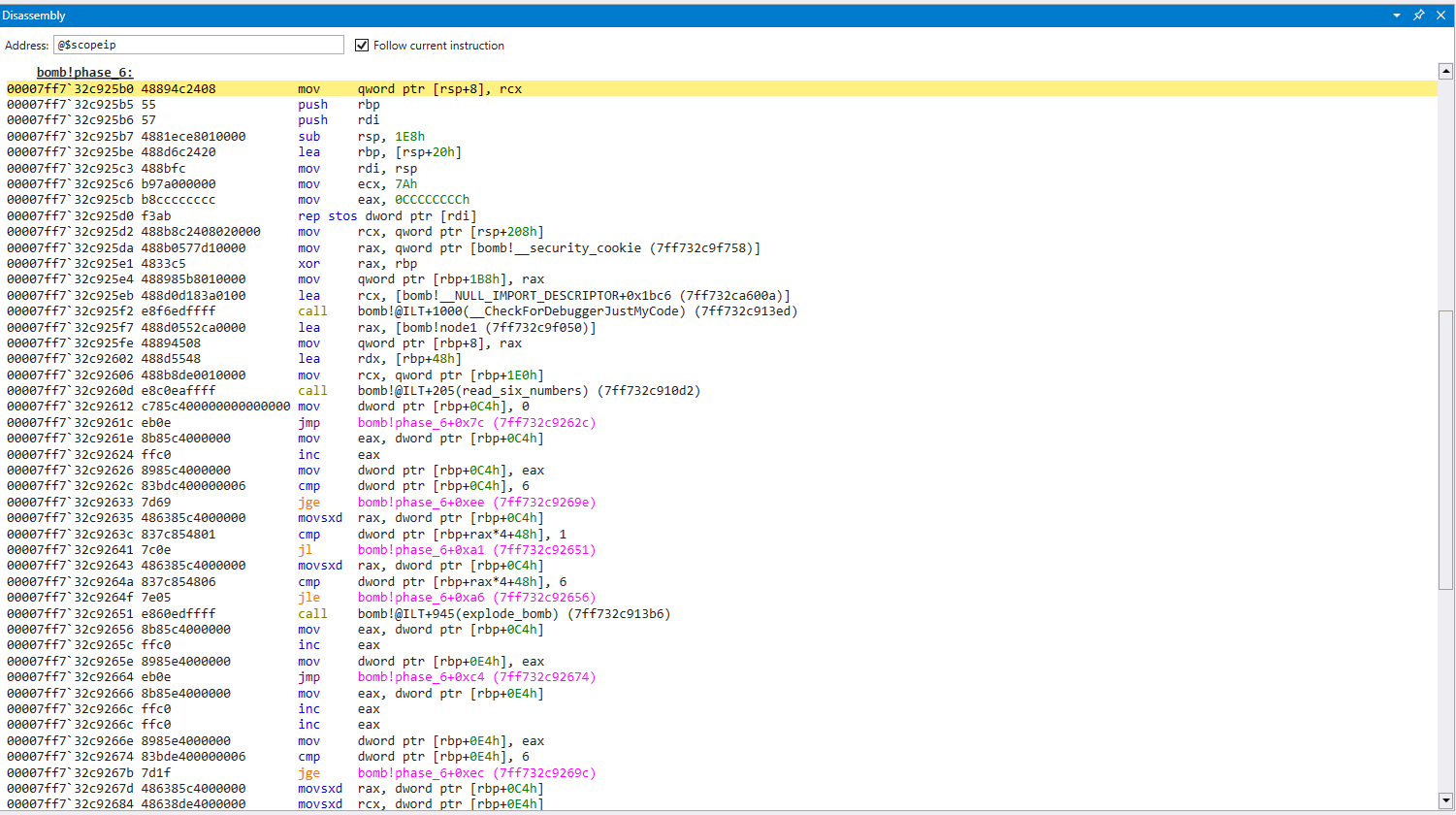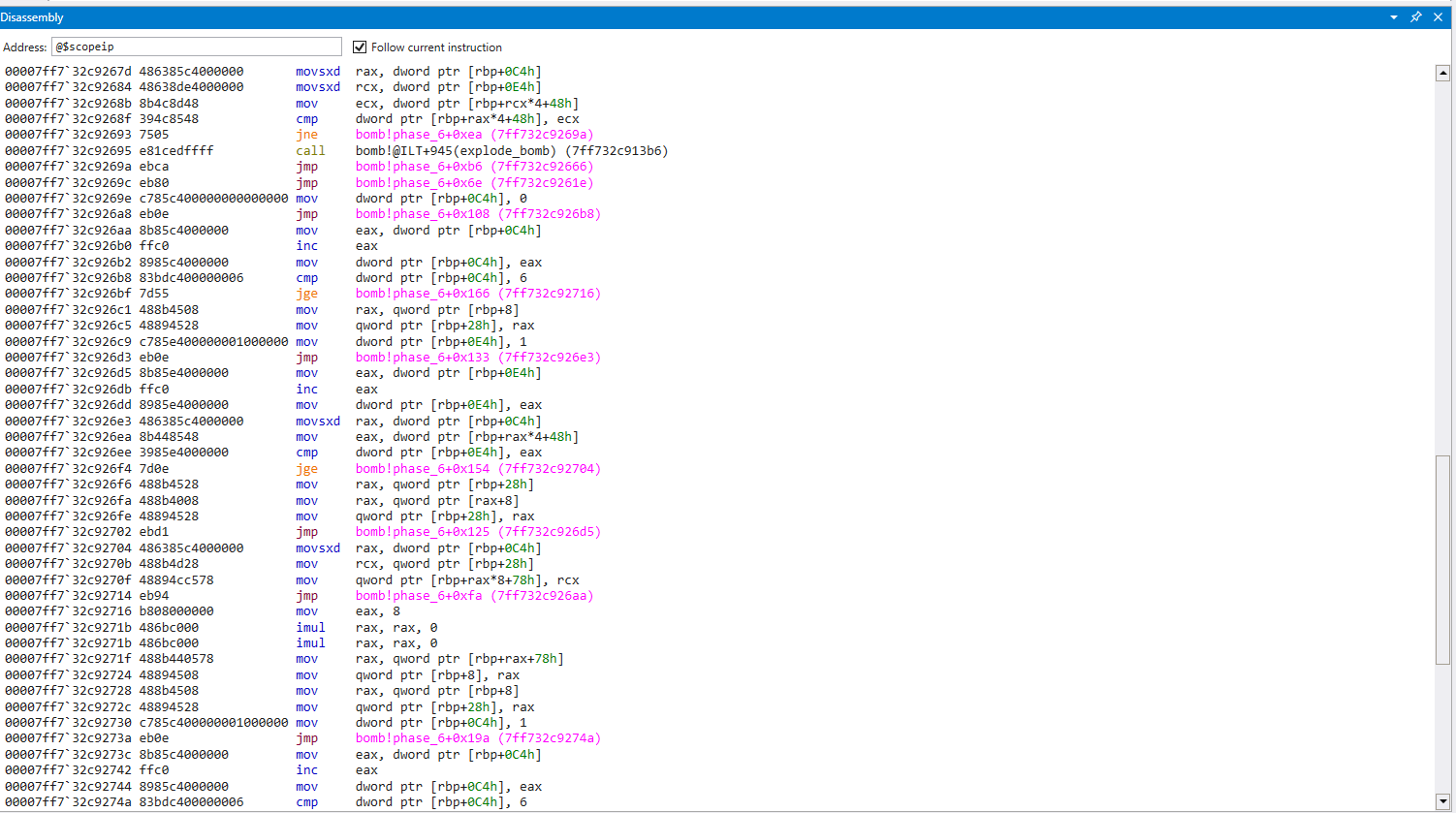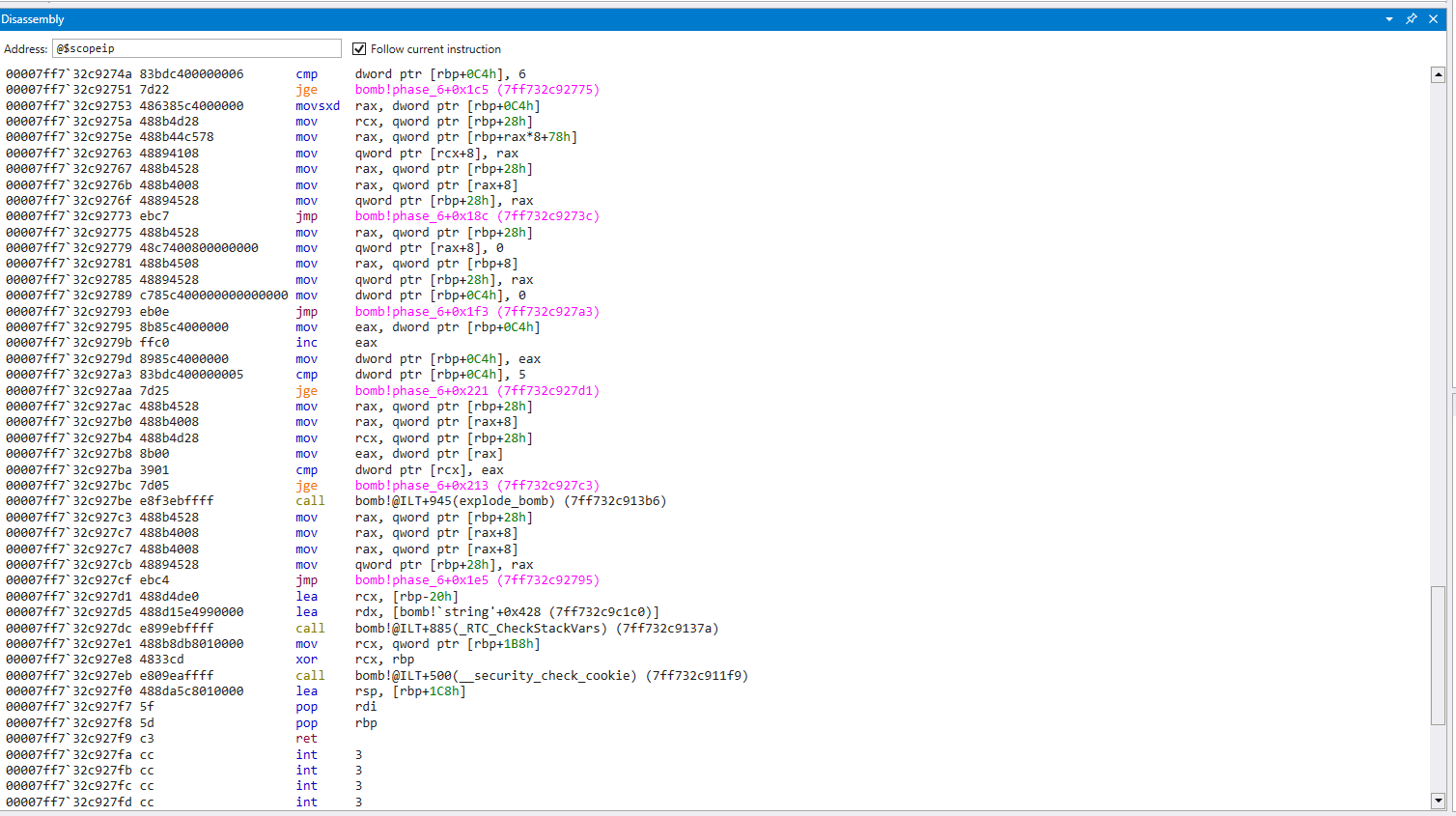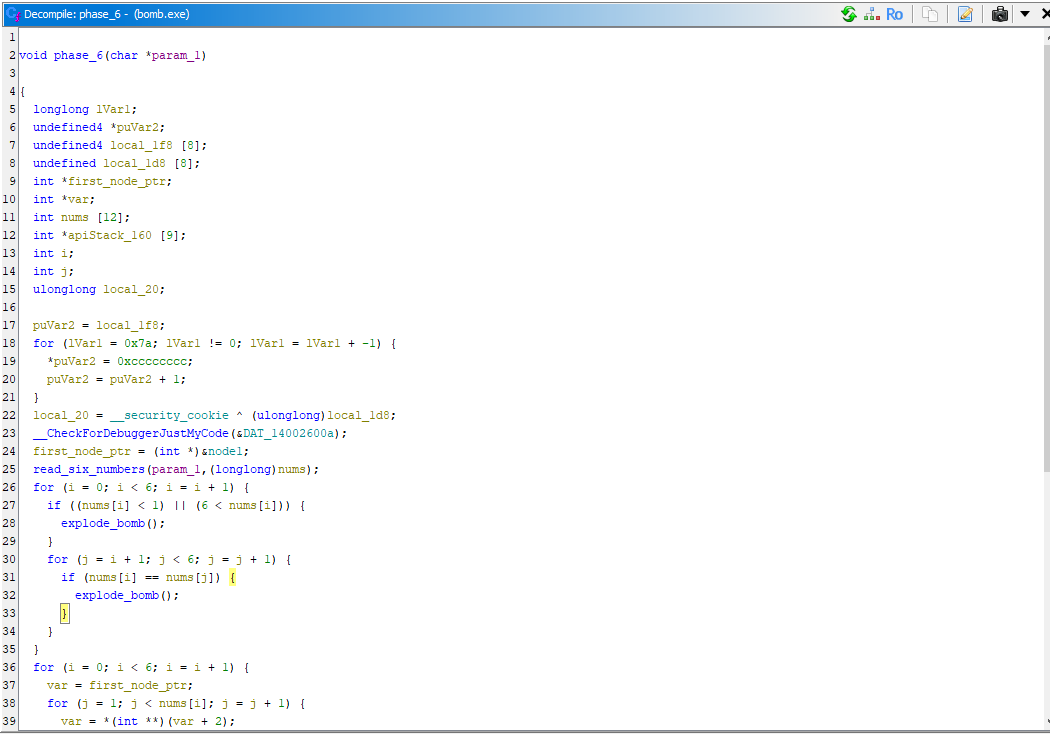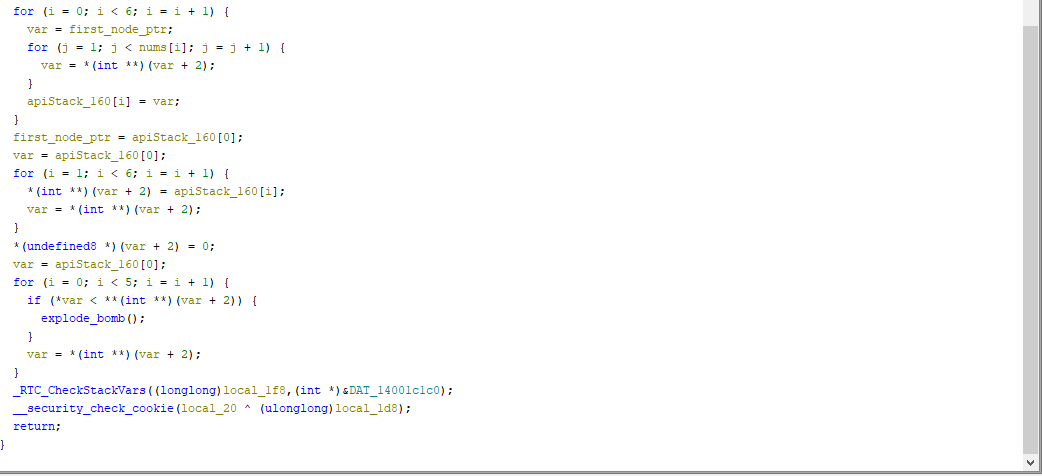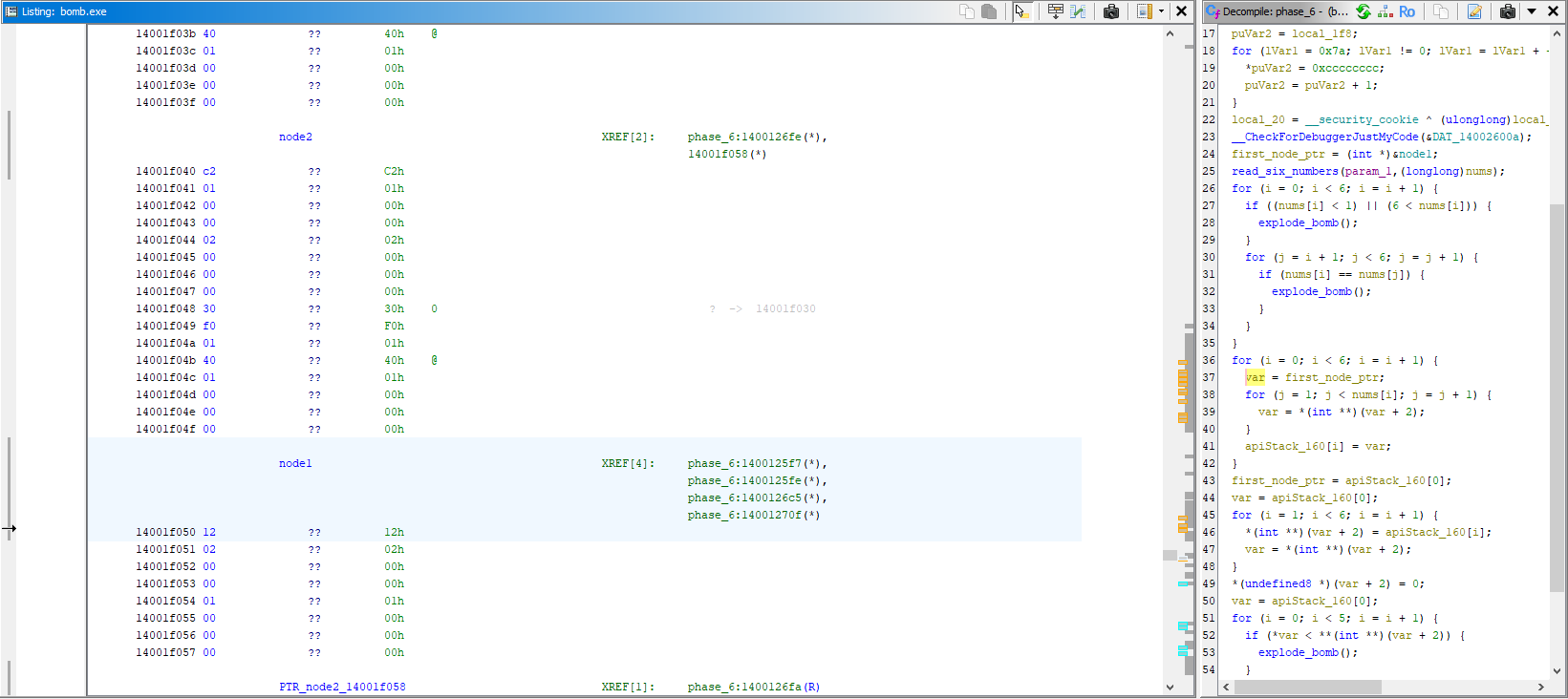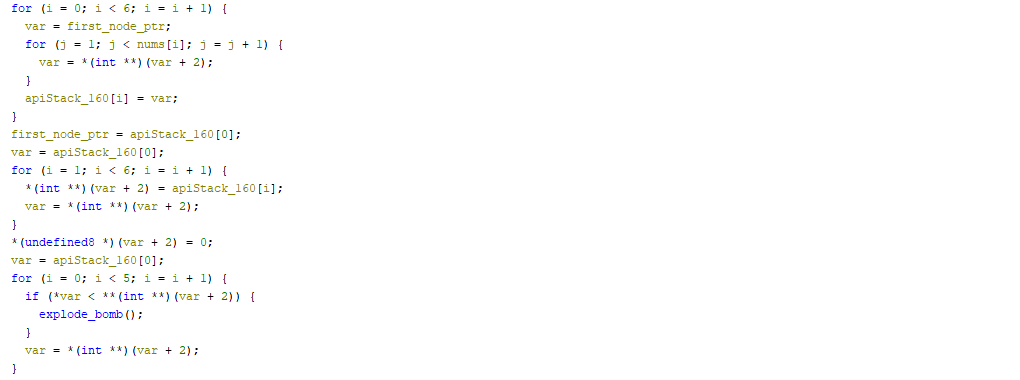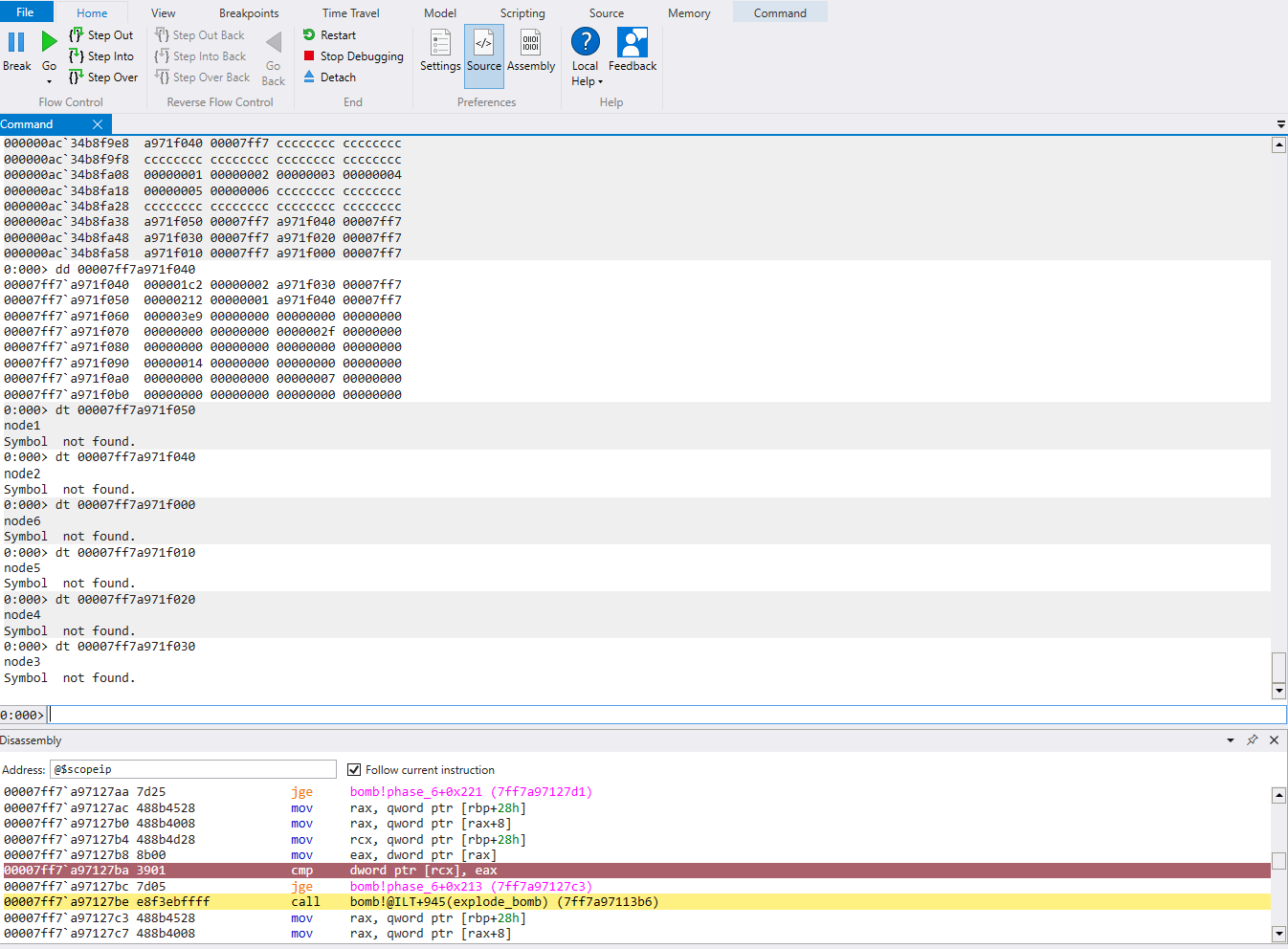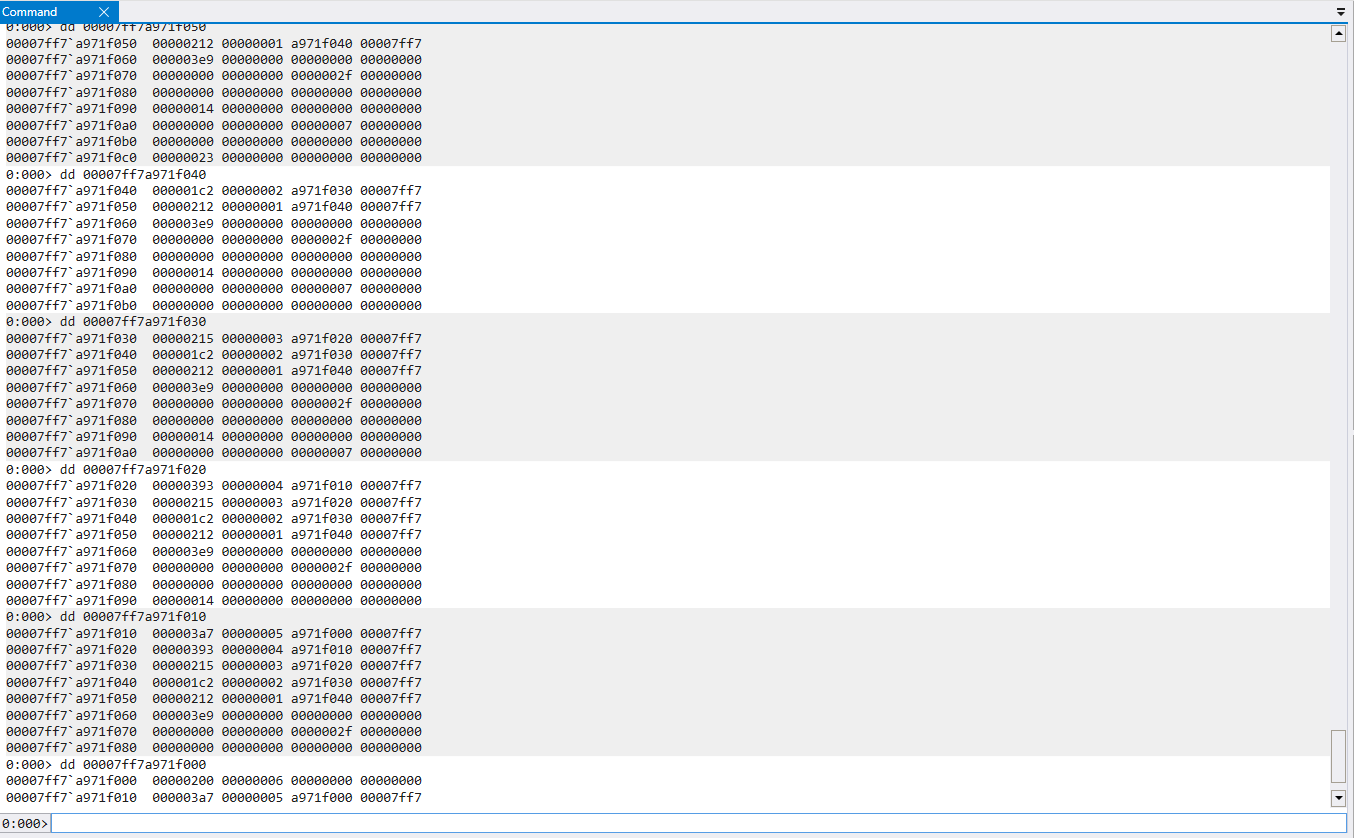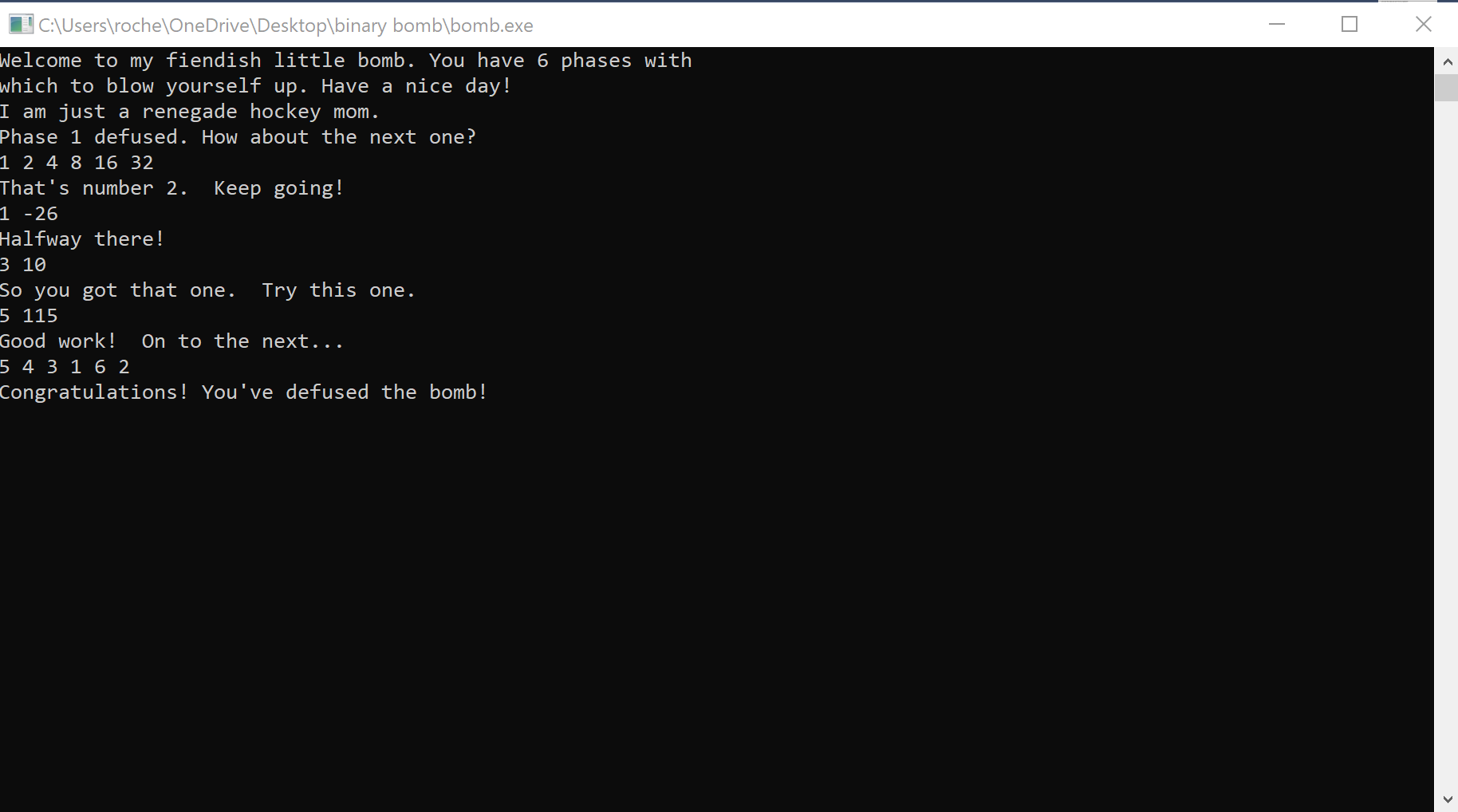CMU Binary Bomb Lab Phase 6
Phase 6
We’ve made it to phase_6(). It hasn’t been easy, but we are here, suited up, ready to defuse the final bomb (hopefully).
If you noticed my ‘hopfully’ at the end of the last walk through, it’s because I ran a string search on the bomb.exe, and I saw something alarming. It was something like "You've found the secret phase!", which has been lingering in my mind ever since I found it. I’ve seen no other evidence of a ‘secret phase’. Probably a skill issue. We’ll see if it comes back to haunt us anywhere in this walk through.
Let’s begin
I only see two function calls in this phase
read_six_numbers()explode_bomb()
and based on our previous encounter with read_six_numbers(), it’s safe to say that this phase wants a specific sequence of 6 numbers
After the call to read_six_numbers(), we have a series of what appears to be loops.
Let’s open this up in Ghidra and take a closer look at the code
Getting straight into it, I see a for loop with a nested for loop
1
2
3
4
5
6
7
8
9
10
for (i = 0; i < 6; i++) {
if ((nums[i] < 1) || (nums[i] > 6)) {
explode_bomb();
}
for (j = i + 1; j < 6; j++) {
if (nums[i] == nums[j]){
explode_bomb()
}
}
}
Here are the two conditions to pass the first check
- Our input must be [1, 6]
- We cannot have any repeating digits in our input
This makes the challenge a bit easier since we are restricted to only numbers [1, 6], and they are all only used once
It gets interesting once we arrive at the next sequence of for loops
If you didn’t spot it above, just before our call to read_six_nums(), we have this declaration
1
first_node_ptr = (int*)&node1;
It appears to be a pointer to a node, but what kind of node?
This appears to be a linked list with 6 nodes in it, which would explain the gnarly pointer notation used in the for loops below
There is a lot going on here, but there is only one compare that leads to an explosion
1
2
3
if (*var < **(int**)(var+2)) {
explode_bomb();
}
Which appears to be iterating from 0-5, comparing the dereferenced value of node n > n+1, and calling explode_bomb() if not true.
We are going to assume our input has some impact on these nodes, otherwise how else can we possibly control if node1 > node2 if we always start with node1 and cannot change the values?
To understand the structure of these nodes, let’s use WinDbg to take a closer look at the memory
WinDbg has a function dt <structure> <addr> that can potentially display the breakdown of a structure such as a node, but it was not working for this. It did, however, confirm the addresses in which node1-node6 reside
If we dump the memory at these addresses, we can view breakdown of node1-node6
Based on this, we can easily see the structure of each node <value> <node number> <memory address>
Node 1: 0x212 Node 2: 0x1c2 Node 3: 0x215 Node 4: 0x393 Node 5: 0x3a7 Node 6: 0x200
If the goal is for node n > n+1 for all nodes in the list, we need to order the nodes in descending order, which would be
Node5 > Node4 > Node3 > Node1 > Node6 > Node2
Seeing that the node numbers are [1,6] and do not repeat, this is most likely our password
We did it! There was obviously alot more work that went into solving this challenge, but I hope I made it at least halfway enjoyable to read/walk through.
Until next time…

